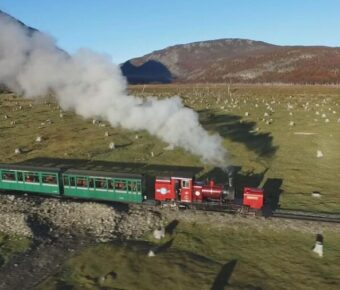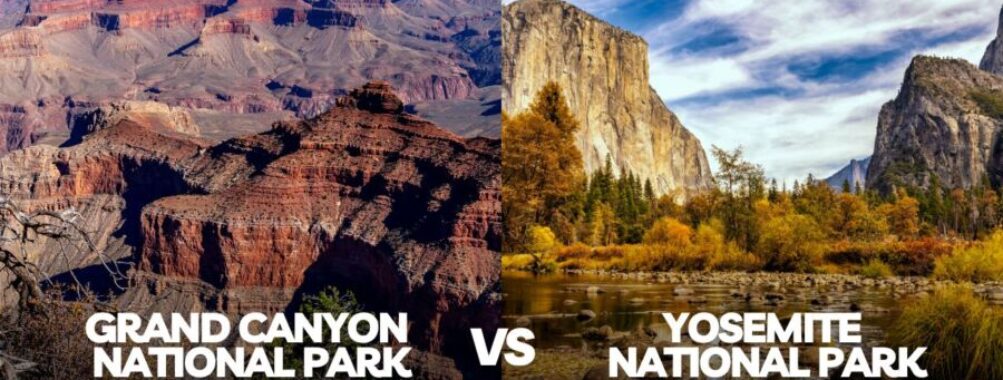
Grand Canyon National Park vs Yosemite National Park: 7 Stunning Differences Every Nature Lover Should Know
Regarding America’s most iconic national parks, Yosemite and Grand Canyon are often top travelers’ bucket lists. These natural wonders showcase entirely different types of beauty that can make choosing between them challenging. Yosemite offers more scenic variety with its glacier-carved valley, waterfalls, and granite formations. At the same time, the Grand Canyon presents the awe-inspiring vastness of a river-shaped canyon with its layered red rock formations.
The visitor experience differs significantly between these parks. Yosemite provides more diverse activities throughout its forested landscape, with hiking trails, rock climbing opportunities, and meadows to explore. While visually spectacular, the Grand Canyon is primarily about taking in the immense views from various lookout points, though hiking into the canyon offers adventurous visitors a completely different perspective.
Accessibility is another factor to consider when planning your visit. Grand Canyon tends to be easier to reach from Las Vegas, while Yosemite’s winding mountain roads can be more challenging to navigate, especially in foggy conditions. Both parks experience heavy tourism, but their distinct landscapes create different natural experiences.
Contents
- History and Significance
- Formation of Landscapes
- Cultural Heritage
- Conservation Efforts
- Geography and Climate
- Topographical Features
- Climate Variations
- Unique Geology
- Natural Attractions
- Grand Canyon’s Majestic Views
- Yosemite’s Iconic Landmarks
- Recreational Activities
- Hiking Trails
- Wildlife Watching
- Adventure Sports
- Visitor Experience
- Seasonal Crowds
- Accommodations and Amenities
- Accessibility and Regulations
- Challenges and Preservation
- Environmental Threats
- Park Management
- Cultural and Educational Impact
- Educational Programs
- Cultural Significance
- Comparative Analysis
- Frequently Asked Questions
- What are the key differences in experiences offered by Grand Canyon National Park compared to Yosemite National Park?
- What are the cost considerations when planning a visit to Grand Canyon National Park or Yosemite National Park?
- How does the visual splendor of Grand Canyon National Park contrast with the natural beauty of Yosemite National Park?
- Which periods of the year are less advisable for visiting Yosemite National Park due to crowd sizes or weather conditions?
- When visiting Grand Canyon National Park and Yosemite National Park, can you recommend some must-see attractions?
- What unique geological features can visitors expect to see in Grand Canyon National Park that differ from those in Yosemite National Park?
- More Travel Guides
History and Significance
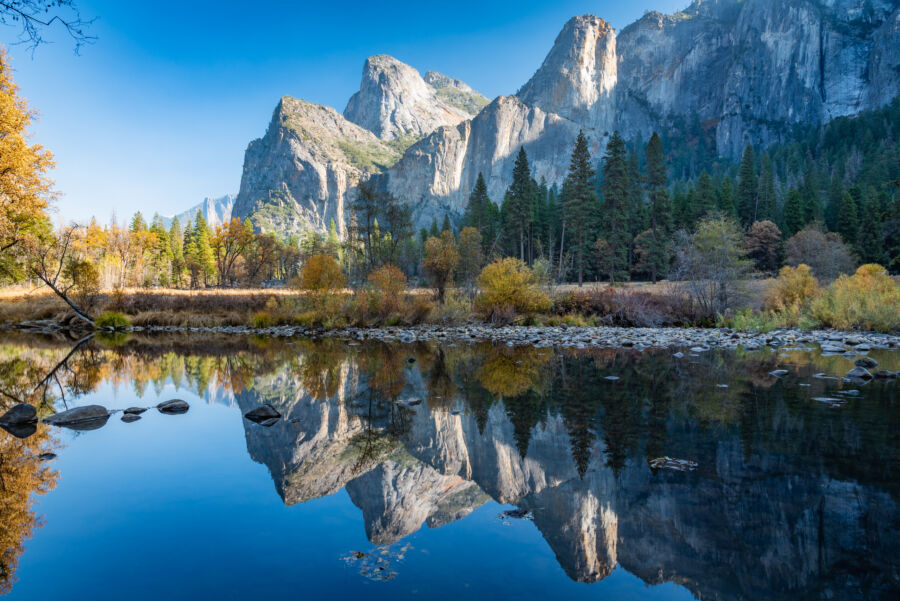
Yosemite and Grand Canyon National Parks hold special places in American conservation history. These natural wonders showcase Earth’s incredible geological processes and represent the evolution of Americans’ values and protection of their natural heritage.
Formation of Landscapes

The Grand Canyon’s stunning layers began forming nearly 2 billion years ago. The Colorado River carved through ancient rock over millions of years, revealing a colorful timeline of Earth’s history. What visitors see today took shape roughly 5-6 million years ago when the river began its persistent cutting action.
Yosemite’s landscape tells a different geological story. Its iconic valley formed primarily through glacial action during the Ice Age. Massive glaciers up to 4,000 feet thick slowly moved through the area, carving out the distinctive U-shaped valley we see today. After the glaciers melted about 10,000 years ago, they left behind the breathtaking cliffs and waterfalls that make Yosemite famous.
The contrast between these two parks highlights nature’s diverse sculptural methods – one created by water’s persistent flow, the other by ice’s grinding force.
Cultural Heritage
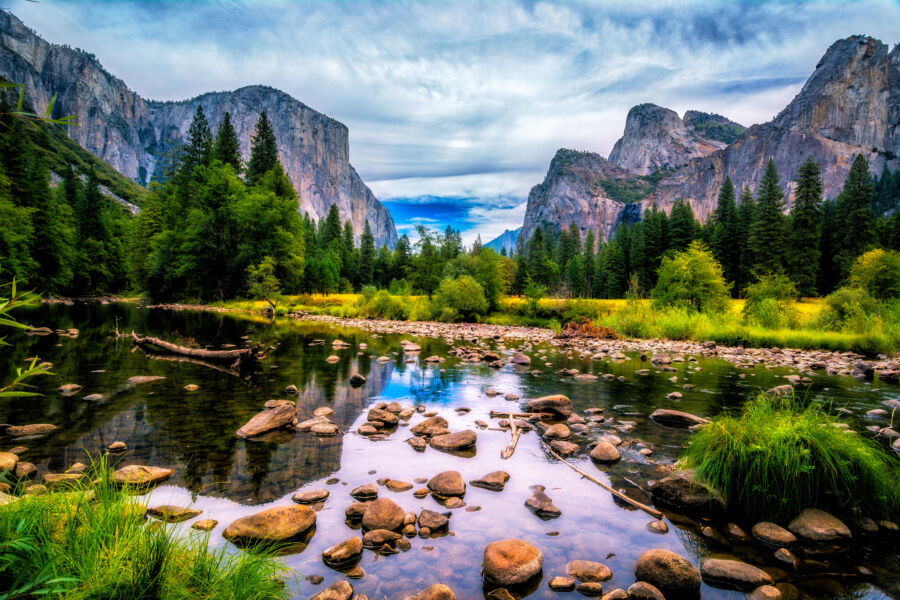
Native Americans first inhabited both regions thousands of years before they became national parks. The Grand Canyon area has been home to several tribes, including the Havasupai, Hualapai, and Navajo, who consider the canyon sacred ground. Their connections to this land continue today.
Yosemite Valley was home to the Ahwahnechee people before European-American settlers arrived. The name “Yosemite” comes from a Native American word, though its exact meaning is debated. Early European visitors in the mid-1800s brought attention to the valley’s beauty, leading to its protection.
Both parks faced similar challenges as American westward expansion brought more settlers and tourists. This growing interest ultimately helped spark the national park movement but also disrupted indigenous communities.
Conservation Efforts

The American National Park concept emerged partly as a response to seeing these natural wonders threatened. Yosemite was pivotal when Abraham Lincoln signed the Yosemite Land Grant in 1864, protecting the valley for “public use and recreation.” This precedent-setting act came before the national park system existed.
The Grand Canyon’s path to protection was longer. After visiting in 1903, President Theodore Roosevelt proclaimed, “Leave it as it is… The ages have worked on it, and man can only mar it.” Despite his passion, the canyon wasn’t designated a national park until 1919.
Both parks continue to face modern conservation challenges. Climate change threatens Yosemite’s glaciers and waterfalls, while the Grand Canyon confronts water scarcity and development pressures. Park managers work to balance preservation with access for the millions who visit annually.
Geography and Climate

The Grand Canyon and Yosemite showcase nature’s incredible power to shape landscapes, but due to their unique locations and formations, they offer vastly different experiences. The parks represent two distinct geological wonders found in the western United States.
Topographical Features

The Grand Canyon, located on the Colorado Plateau in Arizona, features a massive gorge carved by the Colorado River. This enormous canyon stretches about 277 miles long, up to 18 miles wide, and reaches depths over a mile deep. The landscape is characterized by layered bands of colorful rock exposing billions of years of Earth’s history.
Yosemite, nestled in California’s Sierra Nevada mountains, offers a different landscape. Its most famous feature is Yosemite Valley, a glacier-carved valley surrounded by towering granite walls and spectacular waterfalls. Half Dome and El Capitan rise dramatically from the valley floor, creating iconic vertical walls beloved by rock climbers.
While the Grand Canyon impresses with its vast horizontal expanse and depth, Yosemite wows visitors with its vertical granite formations and lush valleys.
Climate Variations

The Grand Canyon experiences extreme temperature variations seasonally and within the canyon. The rim can be 20-30 degrees cooler than the canyon floor. Summer temperatures at the bottom can exceed 100°F, while winter brings snow to the rim areas.
Yosemite’s climate is influenced by its mountain setting in the Sierra Nevada range. The park experiences a Mediterranean climate with warm, dry summers and cool, wet winters. Higher elevations receive significant snowfall, sometimes exceeding 30 feet annually, while the valley floor sees milder conditions.
Rainfall patterns differ dramatically, too. The Grand Canyon area receives limited precipitation (about 16 inches annually), creating its desert-like environment. Yosemite gets more precipitation overall, supporting its diverse forests and flowing waterfalls.
Unique Geology

The Grand Canyon reveals Earth’s geological history through its exposed rock layers. The oldest rocks at the bottom date back nearly 2 billion years. The Colorado River’s persistent erosion created this natural wonder, cutting through layer after layer of sedimentary rock.
Each colorful band tells a story of ancient seas, swamps, deserts, and volcanic activity. The canyon continues to evolve today as the Colorado River slowly deepens it.
Yosemite’s geology centers around granite formations shaped by glacial activity. About 10 million years ago, the Sierra Nevada was uplifted and tilted, allowing rivers to carve deep valleys. Later, massive glaciers further shaped the landscape, creating Yosemite’s characteristic U-shaped valley.
The park’s famous waterfalls, including Yosemite Falls (one of North America’s tallest at 2,425 feet), exist because of this unique glacial history and the valley’s “hanging” tributary valleys.
Natural Attractions

Both parks offer breathtaking natural wonders that draw millions of visitors each year. While the Grand Canyon showcases dramatic cliff faces and colorful rock layers, Yosemite features massive granite formations and stunning waterfalls.
Grand Canyon’s Majestic Views
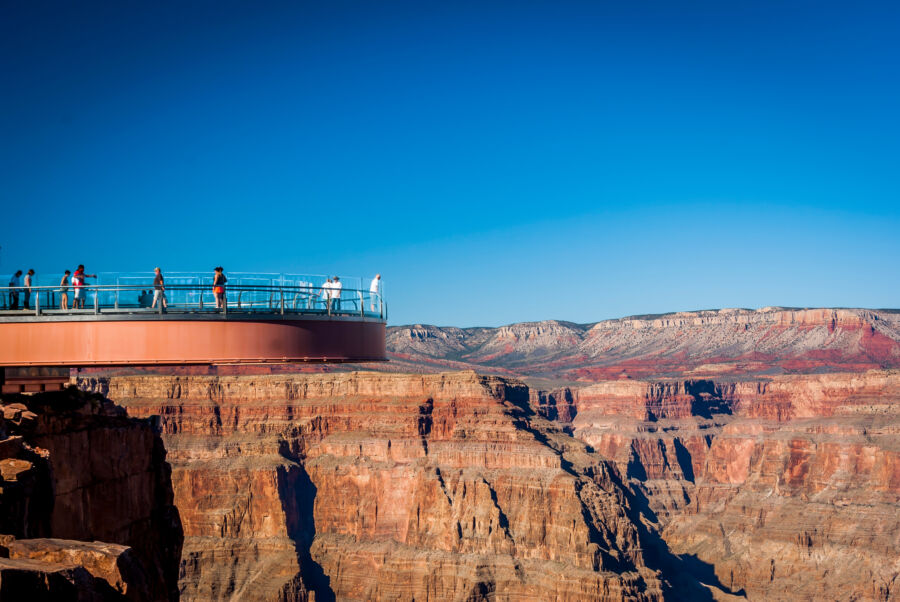
The Grand Canyon presents a spectacular showcase of colorful rock layers carved by the Colorado River over millions of years. The most popular viewpoint is Mather Point, where visitors can see the immense depth and width of the canyon stretch for miles.
The South Rim offers the most accessible views. From here, you can see the dramatic cliffs and the changing colors of the rock formations as the sunlight shifts throughout the day.
The canyon walls display distinct bands of red, orange, and brown rock, revealing Earth’s geological history. These layers tell a story of ancient seas, deserts, and other environments that once covered the area.
Hiking trails like Bright Angel and South Kaibab provide closer views of the canyon’s interior features. The Colorado River appears as a thin ribbon when viewed from the rim, but it’s actually quite powerful up close.
Yosemite’s Iconic Landmarks

Yosemite Valley, a glacier-carved “U-shaped” valley, forms the heart of the park’s most famous attractions. Unlike the Grand Canyon’s river-carved formations, Yosemite’s landscape was shaped primarily by glaciers.
Towering granite monoliths dominate the scenery. El Capitan rises 3,000 feet from the valley floor, while Half Dome’s distinctive shape makes it instantly recognizable to visitors from around the world.
Yosemite’s waterfalls are among its most spectacular features. Yosemite Falls, one of North America’s tallest at 2,425 feet, flows dramatically in spring when snowmelt is at its peak. Bridalveil Fall creates a misty spectacle that’s visible from many valley viewpoints.
The park’s meadows provide open spaces where visitors can take in panoramic views. These areas burst with wildflowers in spring, creating colorful displays against granite cliffs.
Glacier Point offers one of the most spectacular views in the park, overlooking Yosemite Valley, Half Dome, and several waterfalls from 3,200 feet above.
See Related: Most Affordable Summer Destinations
Recreational Activities
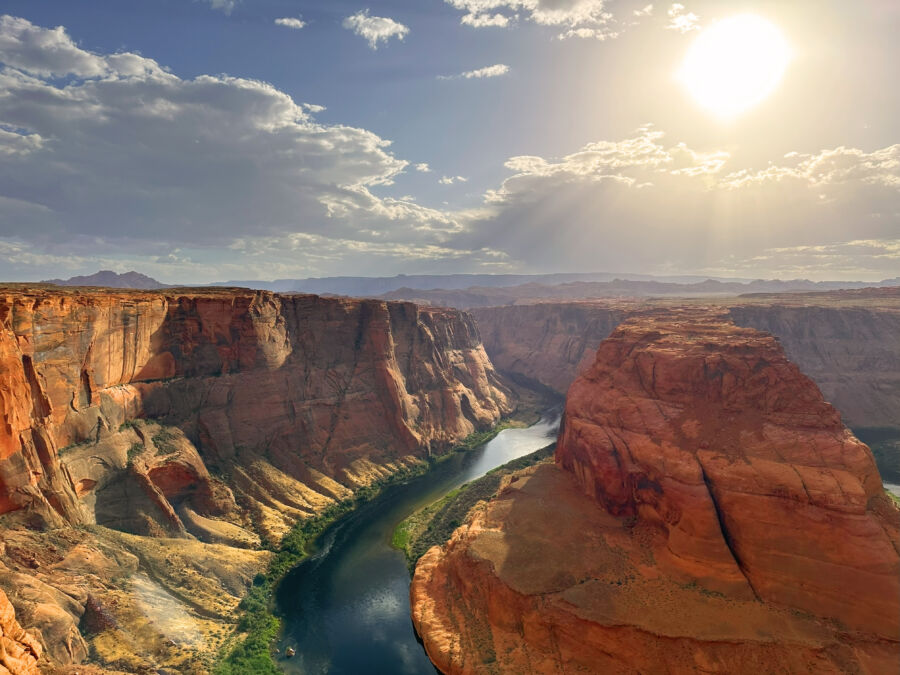
Grand Canyon National Park and Yosemite National Park offer amazing outdoor activities that appeal to nature lovers and adventure seekers. Each park’s unique landscapes create different experiences for visitors exploring and enjoying the natural surroundings.
Hiking Trails

The Grand Canyon’s hiking network features trails with dramatic elevation changes and desert scenery. The popular South Rim offers day hikes like the Bright Angel Trail and South Kaibab Trail that take you into the canyon depths. Remember that hiking down means you’ll need energy to climb back up!
Yosemite’s trails showcase waterfalls, meadows, and granite formations. The Mist Trail to Vernal and Nevada Falls gives hikers an up-close experience with powerful waterfalls. Half Dome is a challenging but rewarding 14-16 mile trek requiring permits and cables to reach the summit.
Both parks offer options for all skill levels. Grand Canyon trails tend to be more strenuous due to elevation changes, while Yosemite provides more variety, from flat valley walks to steep mountain climbs. Always carry plenty of water, especially at Grand Canyon, where summer temperatures exceed 100°F.
Wildlife Watching

Yosemite’s diverse ecosystems support over 400 animal species. Lucky visitors might spot black bears, mule deer, or coyotes in meadows and forests. Dawn and dusk offer the best viewing times in Yosemite Valley and high country meadows.
The Grand Canyon hosts a different array of wildlife adapted to desert conditions. Desert bighorn sheep navigate the steep canyon walls while California condors soar overhead. The North Rim provides excellent opportunities to spot wildlife like deer and wild turkeys in forested areas.
Both parks require visitors to stay safe from animals and never feed wildlife. Yosemite has more visible large mammals, while Grand Canyon wildlife tends to be more elusive but unique to desert environments. Binoculars will enhance your wildlife-watching experience in either park.
Adventure Sports
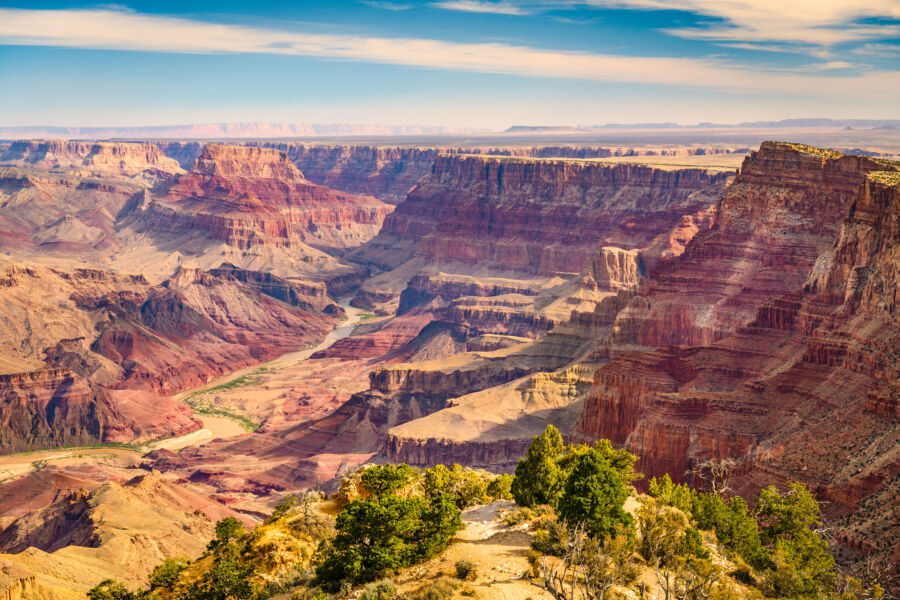
Beyond hiking, both parks offer exciting adventure activities. Yosemite is world-famous for rock climbing, with El Capitan and Half Dome attracting climbers globally. The park also offers horseback riding, fishing in the Merced River, and winter sports like skiing at Badger Pass.
The Grand Canyon provides thrilling rafting expeditions down the Colorado River, ranging from single-day trips to multi-week adventures. Mule rides along the rim and into the canyon are popular experiences unique to the Grand Canyon. The South Rim offers bicycle rentals for exploring designated bike paths.
During winter, Yosemite’s higher-elevation areas become snowy wonderlands for cross-country skiing and snowshoeing. Grand Canyon’s South Rim remains open year-round, though some North Rim facilities close seasonally. Both parks require permits for certain activities, so planning is essential.
Visitor Experience

When comparing the Grand Canyon and Yosemite National Parks, the visitor experience differs dramatically based on each location’s natural landscapes, crowds, facilities, and regulations. Both parks offer unforgettable experiences but cater to different preferences and travel styles.
Seasonal Crowds

The Grand Canyon sees its highest visitor numbers during summer, especially from June through August. The South Rim gets particularly packed, with parking lots filling up by mid-morning. Winter brings fewer crowds, but some services might be limited, especially at the North Rim, which closes completely.
Yosemite faces severe crowding issues during summer weekends, particularly in Yosemite Valley. Visitors might encounter traffic jams and full parking lots before 9 a.m. from May through September. The park sometimes implements reservation systems during peak periods to manage overcrowding.
Fall and spring offer better experiences at both parks, with comfortable temperatures and fewer people. Winter in Yosemite transforms the landscape with snow but requires chains for vehicles and completely closes Tioga Road.
Accommodations and Amenities

Grand Canyon offers various lodging options, from the historic El Tovar Hotel to more budget-friendly lodges. Campgrounds fill quickly, especially Mather Campground on the South Rim. The park has several restaurants, grocery stores, and gift shops clustered in village areas.
Yosemite provides more diverse accommodations, including the luxury Ahwahnee Hotel, rustic cabins in Curry Village, and various campgrounds. The park features more extensive dining options and better cell service than the Grand Canyon in developed areas.
Both parks require reservations well in advance—sometimes 6-12 months for prime lodging during summer. Yosemite’s proximity to San Francisco makes visiting as a day trip possible, while the Grand Canyon typically requires overnight stays.
Accessibility and Regulations

The Grand Canyon’s South Rim is open year-round and accessible via regular shuttle buses that connect viewpoints and trails. Many overlooks are wheelchair accessible, and the Rim Trail offers paved sections. Private vehicles face restrictions in certain areas during peak season.
Yosemite implements a reservation system during busy periods to limit overcrowding. The park offers a free shuttle system throughout Yosemite Valley and Mariposa Grove. Many popular spots like Lower Yosemite Falls have accessible pathways.
Both parks have strict regulations regarding wildlife interaction, food storage, and off-trail hiking. Pets face significant restrictions on trails in both parks, limited mostly to developed areas and paved paths. Drone usage is prohibited in both parks, and backcountry permits are required for overnight wilderness trips.
Challenges and Preservation
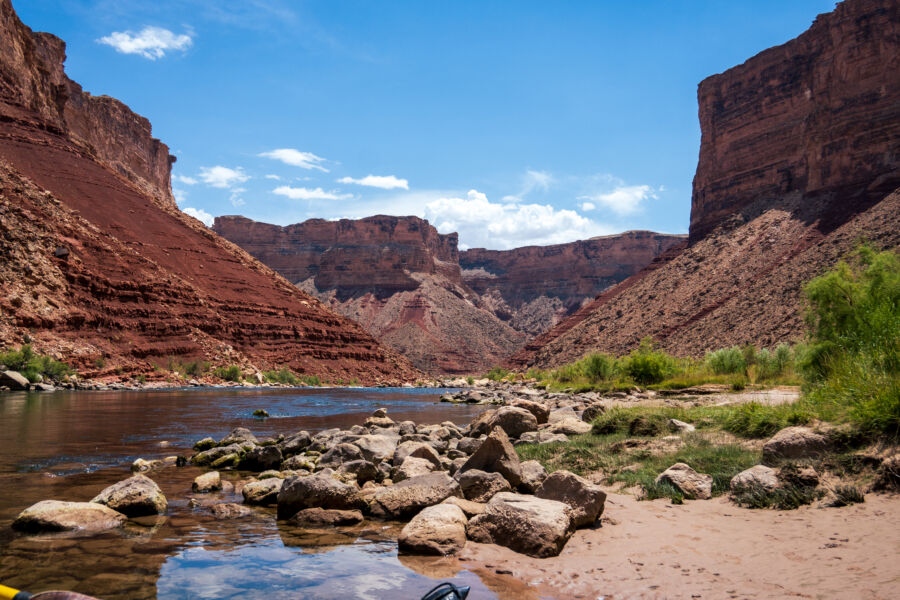
Despite their protected status, the Grand Canyon and Yosemite National Parks face serious threats. These iconic landscapes must balance visitor enjoyment with conservation needs while addressing climate change impacts.
Environmental Threats
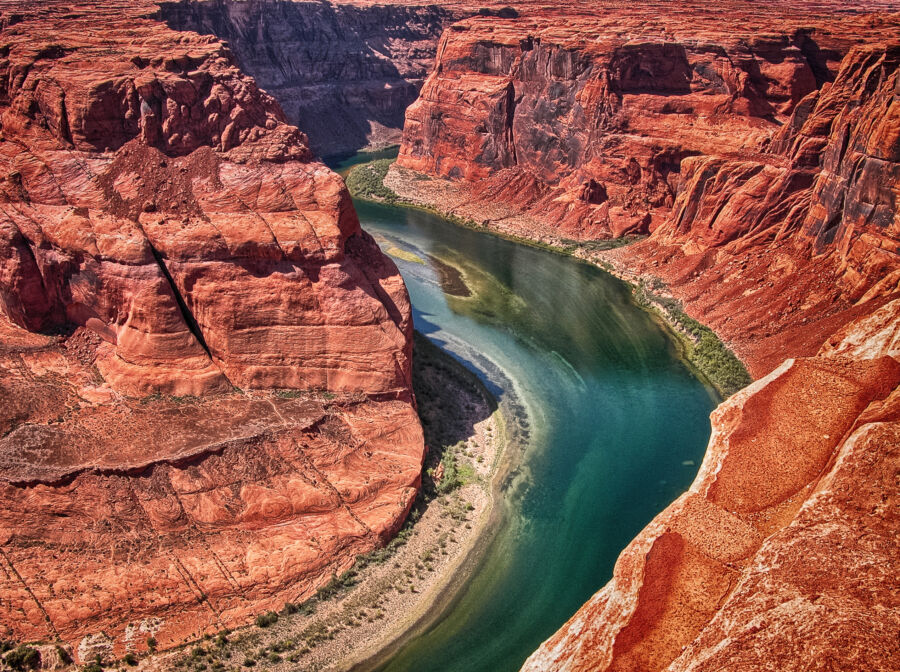
Climate change ranks among the biggest challenges for both parks. At Grand Canyon, rising temperatures are affecting wildlife habitats and water sources. The Colorado River, which carved the canyon over millions of years, faces decreasing water levels due to drought and increased demand.
Yosemite struggles with similar issues. Its famous glaciers are shrinking at an alarming rate. Melting snowpack changes the timing of waterfalls and impacts the park’s ecosystem. Wildfires have become more frequent and intense, threatening ancient sequoia groves.
Air pollution affects visibility at both parks. On bad days, haze can severely limit the breathtaking views visitors travel thousands of miles to see. Invasive species also threaten native plants and animals in both parks.
Park Management

Visitor numbers present a major challenge. Before COVID, Grand Canyon hosted over 6 million annual visitors, while Yosemite welcomed around 4 million. This heavy traffic causes trail erosion, wildlife disturbance, and overcrowding at popular viewpoints.
Both parks have implemented reservation systems for peak periods. Yosemite pioneered timed entry permits during busy seasons to reduce congestion. Grand Canyon has focused on shuttle systems to minimize vehicle traffic on the South Rim.
Budget constraints limit park managers’ accomplishments. Despite entrance fees, federal funding hasn’t kept pace with needs. Infrastructure repairs, ranger staffing, and scientific research compete for limited dollars.
Conservation partnerships have become essential. Both parks work with non-profit organizations to fund restoration projects. Volunteer programs help maintain trails and educate visitors about leaving no trace when exploring these natural treasures.
See Related: Most Breathtaking Places to Visit in the World (Travel Guide)
Cultural and Educational Impact

Both the Grand Canyon and Yosemite National Parks serve as living classrooms and cultural treasures that shape our understanding of natural history and conservation. These parks offer visitors learning opportunities while preserving stories that connect us to our past.
Educational Programs

The Grand Canyon offers amazing ranger-led programs that teach visitors about geology, wildlife, and the canyon’s formation over millions of years. Junior Ranger activities get kids involved through interactive booklets and hands-on exploration. Families have said these programs bring science to life!
Yosemite takes education seriously, too, with its nature centers and guided walks focusing on glacier formation and the valley’s unique ecosystem. Their “Parks as Classrooms” initiative partners with schools to bring students immersive learning experiences among towering sequoias and dramatic waterfalls.
Both parks have recently begun incorporating climate change education. Rangers now explain how rising temperatures affect these precious landscapes’ water sources, wildlife habitats, and fire patterns. These lessons help visitors understand environmental challenges beyond park boundaries.
Cultural Significance

The Grand Canyon holds deep meaning for Native American tribes like the Havasupai, Hualapai, and Navajo. These communities have lived in and around the canyon for thousands of years. The Desert View Watchtower showcases indigenous art and perspectives, honoring these continuing connections.
Yosemite’s cultural story includes the Ahwahnechee people and, later, the iconic photography of Ansel Adams, which helped Americans see the value in preserving wild places. The Yosemite Museum displays Native American baskets and tools and tells stories of the people who first called the valley home.
Both parks preserve historic structures that tell America’s conservation story. From rustic lodges to visitor centers, these buildings represent our evolving relationship with nature. Park rangers often share how figures like John Muir and Teddy Roosevelt fought to protect these landscapes for future generations.
Comparative Analysis

When comparing the Grand Canyon and Yosemite, they offer completely different experiences despite both being amazing national parks.
The scenery in these parks couldn’t be more different. The Grand Canyon showcases a massive desert canyon with layers of red rock, while Yosemite features towering granite cliffs, waterfalls, and lush valleys. It’s like choosing between a painted desert and a mountain paradise!
Accessibility:
- Grand Canyon: Mostly flat driving, easier to navigate
- Yosemite: Winding mountain roads, occasional fog, more challenging to drive
Environment Type:
- Grand Canyon: Desert landscape with dramatic elevation changes
- Yosemite: Mountain valley with forests, meadows, and abundant water features
The hiking experiences vary greatly, too. Yosemite offers more wooded trails with shade and diverse ecosystems, while the Grand Canyon’s trails are more exposed and offer dramatic views.
Many travelers find the Grand Canyon easier to visit as a day trip, especially from Las Vegas. On the other hand, Yosemite often benefits from a longer stay to fully appreciate its scattered attractions.
Both parks get crowded, but Yosemite’s popularity can make accommodations harder to secure. Book reservations as early as possible for either destination!
While the Grand Canyon is considered one of the world’s natural wonders, Yosemite is often described as possibly “the nicest spot in the US,” according to some travelers.
See Related: Best Winter Destinations in the US: Snowy Escapes You Can’t Miss
Frequently Asked Questions

Before planning their trips, visitors often wonder about the key differences between these iconic national parks. Each park offers unique features, costs, and experiences worth considering.
What are the key differences in experiences offered by Grand Canyon National Park compared to Yosemite National Park?
Grand Canyon offers a desert environment centered around one massive geological feature – a giant canyon carved by the Colorado River over millions of years. The experience focuses on viewpoints along the rim and hiking trails that descend into the canyon.
Yosemite provides a mountain valley environment with diverse landscapes, including waterfalls, meadows, giant sequoias, and granite cliffs. Visitors can enjoy more varied activities like rock climbing, swimming in rivers, and exploring different ecosystems within one park.
The Grand Canyon experience tends to be more contemplative, focused on its vastness and geological history. With its forests, lakes, and mountains, Yosemite offers more adventurous opportunities.
What are the cost considerations when planning a visit to Grand Canyon National Park or Yosemite National Park?
Both parks charge similar entrance fees – about $35 per vehicle for a 7-day pass. The America the Beautiful annual pass ($80) covers both parks and is worth considering for multiple visits.
Accommodation costs vary widely. Grand Canyon offers options from camping ($18-25 per night) to luxurious rim-side lodges ($200-500+ per night). Yosemite has similar ranges but tends to book faster, especially during summer.
Though Yosemite has more dining options, food expenses are comparable. Transportation costs differ – Grand Canyon is more accessible from Las Vegas, while Yosemite requires longer drives from major cities like San Francisco.
How does the visual splendor of Grand Canyon National Park contrast with the natural beauty of Yosemite National Park?
The Grand Canyon offers dramatic, sweeping, layered red rock vistas showcasing Earth’s geological history. Its beauty lies in its immense scale, vibrant colors, and the way light plays across the canyon throughout the day.
Yosemite presents a more varied visual palette with towering waterfalls, lush forests, and massive granite formations like Half Dome and El Capitan. Its beauty feels more intimate and changes with the seasons.
Grand Canyon impresses with a singular, awe-inspiring feature, while Yosemite is captivated by diverse landscapes in closer proximity. Both offer stunning photo opportunities but with completely different natural aesthetics.
Which periods of the year are less advisable for visiting Yosemite National Park due to crowd sizes or weather conditions?
Summer (June-August) brings the largest crowds to Yosemite, with traffic congestion and limited parking. Weekends during this period are particularly crowded, sometimes requiring hours of waiting to enter the park.
Winter (December-February) presents challenges with snow and ice. Many roads close, including Tioga Road, which cuts off access to the park’s eastern section. Vehicles may require chains.
Late fall can be tricky, as many waterfalls dry up by October. Spring flooding, typically in March or April, can occasionally close parts of Yosemite Valley in wet years.
When visiting Grand Canyon National Park and Yosemite National Park, can you recommend some must-see attractions?
At the Grand Canyon, Mather Point offers an iconic first view for many visitors. The Bright Angel Trail provides a taste of hiking below the rim, even for a mile or two. Desert View Watchtower combines history and panoramic views.
In Yosemite, don’t miss Yosemite Falls (North America’s tallest waterfall), Glacier Point for valley views, and Mariposa Grove of Giant Sequoias. In one frame, Tunnel View provides the classic vista of El Capitan, Half Dome, and Bridalveil Fall.
For more adventurous visitors, rafting the Colorado River in Grand Canyon or hiking to Half Dome in Yosemite (permit required) creates unforgettable experiences.
What unique geological features can visitors expect to see in Grand Canyon National Park that differ from those in Yosemite National Park?
Grand Canyon reveals nearly two billion years of Earth’s geological history in its exposed rock layers. Visitors can see clearly defined limestone, sandstone, shale, and schist strata, each representing different ancient environments.
The Colorado River continues to carve the canyon, though much more slowly than in the past. Fascinating rock formations like Vishnu Schist represent some of the oldest exposed rocks in North America.
Yosemite’s geology centers around granite formations shaped by glacial activity. Half Dome, El Capitan, and Cathedral Rocks showcase how glaciers and exfoliation created smooth, rounded surfaces and sheer cliffs rather than the layered sedimentary features of the Grand Canyon.

